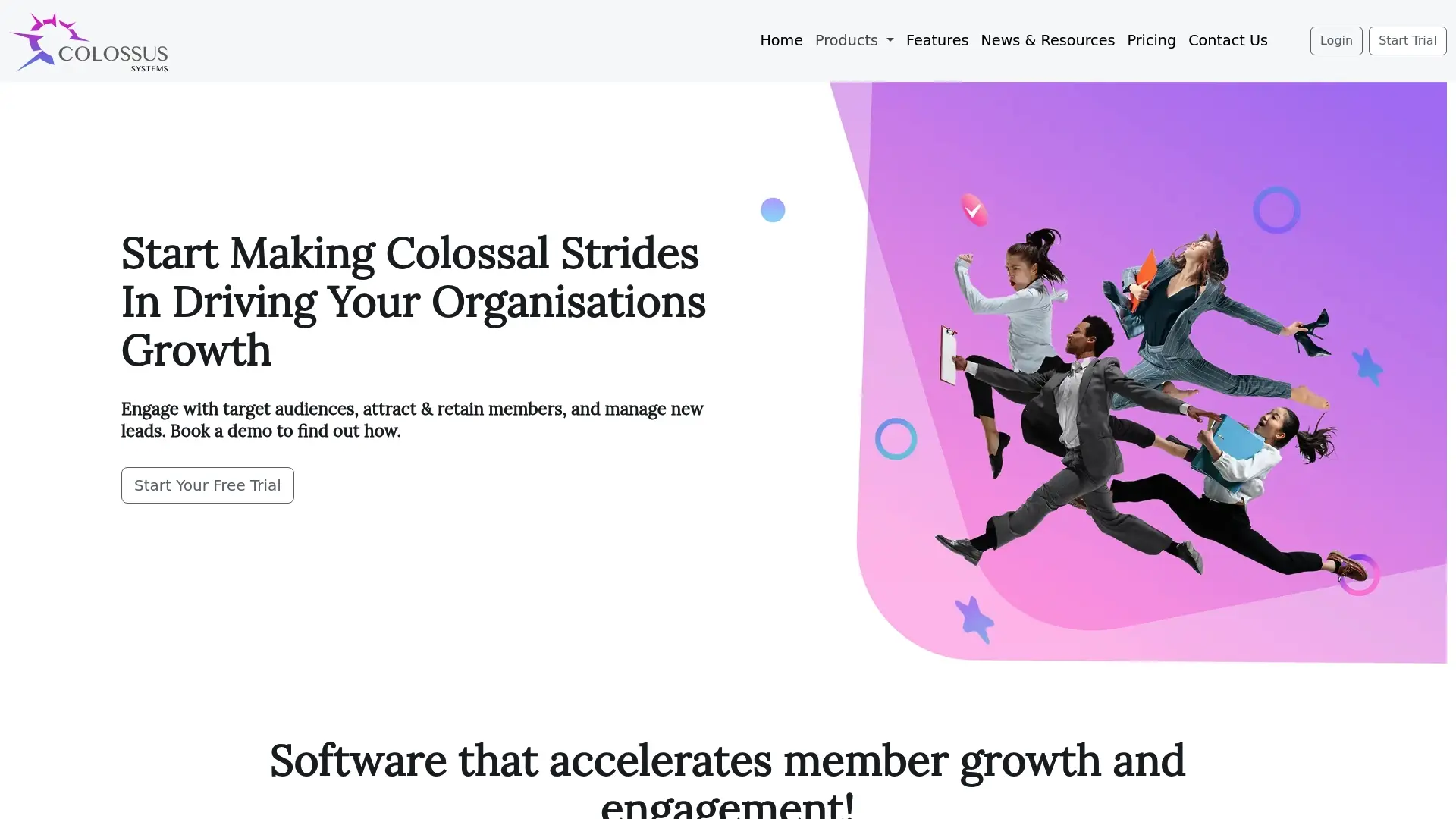Master Staff Training Best Practices for Success
Staff training is often treated as a tick-box exercise, yet the difference between average and high-performing teams can be stark. Did you know that organisations with well-structured training plans are up to 40 percent more productive than those without. Most people assume pouring money into any learning programme is enough. Yet it is usually subtle tweaks in strategy and regular feedback that unlock lasting results.

Table of Contents
- Step 1: Assess Current Training Needs
- Step 2: Develop A Comprehensive Training Plan
- Step 3: Choose Effective Training Methods
- Step 4: Implement The Training Programme
- Step 5: Evaluate Training Outcomes
- Step 6: Adjust Training Strategies Based On Feedback
Quick Summary
| Key Point | Explanation |
|---|---|
| 1. Assess current training needs thoroughly | Evaluate workforce capabilities using diverse data sources to identify specific skill gaps and learning objectives. |
| 2. Develop a flexible training plan | Create a detailed curriculum with clear objectives and a variety of training methodologies tailored to different learning styles. |
| 3. Choose diverse training methods | Implement a range of training modalities, including interactive and digital methods, to cater to varying preferences and enhance engagement. |
| 4. Implement training programs effectively | Ensure logistical preparations and foster interactive learning environments to facilitate immediate skill application and engagement. |
| 5. Regularly evaluate and adjust training outcomes | Use comprehensive evaluation methods to measure training effectiveness and continuously refine strategies based on participant feedback. |
Step 1: Assess Current Training Needs
Understanding your organisation’s current training landscape is the foundational step in creating an effective staff training strategy. This critical initial phase helps you identify performance gaps, skill deficiencies, and strategic learning objectives that will drive meaningful organisational development.
To begin the assessment, leaders must conduct a comprehensive evaluation of existing workforce capabilities. This involves gathering data through multiple channels such as performance reviews, employee surveys, manager feedback, and skills gap analyses. Managers should approach this process systematically, examining individual and team performance metrics to pinpoint precise areas requiring targeted training interventions.
The assessment process requires a multi-dimensional approach. Observe current workflow performance, analyse recent project outcomes, and conduct candid discussions with team members about their perceived skill limitations. During these conversations, encourage open dialogue where employees can transparently share their professional development aspirations and perceived knowledge barriers. Documentation is crucial - create structured evaluation frameworks that capture qualitative and quantitative insights about current skill levels and potential growth pathways.
Organisational leaders should leverage both internal resources and external perspectives. Consider exploring our virtual training strategies to understand contemporary training methodologies that can complement your assessment process. External benchmarking against industry standards can also provide valuable context for your internal evaluation.
Successful completion of this assessment stage means developing a clear, documented understanding of your organisation’s current training landscape. Key verification indicators include:
- A comprehensive skills matrix mapping existing workforce capabilities
- Identified performance gaps with specific, measurable learning objectives
- Prioritised training needs ranked by potential organisational impact
- Preliminary draft of targeted training interventions
By meticulously executing this initial assessment, organisations create a robust foundation for developing training programmes that are precisely tailored to their unique operational requirements and strategic goals.
To help you verify that each main step of the staff training process is completed efficiently, refer to the following checklist. This table summarises the key verification indicators at each stage so you can track progress and ensure thorough implementation.
| Step | Key Verification Indicators |
|---|---|
| Assess Training Needs | Skills matrix, identified gaps, prioritised needs, draft interventions |
| Develop Training Plan | Defined objectives, varied curriculum, timelines, tracking mechanisms |
| Choose Training Methods | Alignment with objectives, participant engagement, measurable improvement |
| Implement Programme | Attendance, participant feedback, clear objectives, minimal disruption |
| Evaluate Outcomes | Performance improvements, feedback, skill demonstration, ROI |
| Adjust Strategies | Improved content, increased engagement, measurable outcomes, documented changes |

Step 2: Develop a Comprehensive Training Plan
Transforming your initial training needs assessment into a robust, actionable plan requires strategic thinking and meticulous design. The comprehensive training plan serves as a roadmap that translates organisational skill gaps into targeted learning experiences that drive professional development and operational excellence.
Begin by translating your assessment findings into clear, measurable learning objectives. Each objective must be specific, quantifiable, and aligned with broader organisational goals. Consider the skills required not just for current roles, but also for future strategic positioning. This forward-looking approach ensures that training investments contribute to long-term workforce capabilities. Develop a detailed curriculum that breaks down complex skills into manageable learning modules, ensuring progressive skill acquisition that builds confidence and competence.
Resourceful organisations recognise that training is not a one-size-fits-all endeavour. Design flexible learning pathways that accommodate different learning styles, experience levels, and scheduling constraints. explore our virtual training strategies to understand how technology can enhance learning accessibility. Consider incorporating diverse training methodologies such as interactive workshops, online modules, peer mentoring, and practical skill application sessions. Budget allocation is crucial - ensure financial resources are strategically distributed across different training interventions to maximise learning impact.
Effective training plans demand ongoing adaptability. Build mechanisms for continuous feedback and programme refinement. Schedule periodic reviews to assess training effectiveness, participant engagement, and skill transfer. Your verification checklist should include:
- Clearly defined learning objectives for each training module
- Comprehensive curriculum with varied learning methodologies
- Estimated timelines and resource requirements
- Mechanisms for tracking individual and collective learning progress
By creating a dynamic, comprehensive training plan, organisations establish a powerful framework for continuous professional development that drives individual growth and collective organisational success.
Step 3: Choose Effective Training Methods
Selecting the right training methods is a critical step that transforms learning objectives into meaningful skill development. The goal is to create engaging, impactful learning experiences that resonate with different learning styles and organisational needs.
Diversity in training approaches is key to comprehensive skill acquisition. Modern organisations must move beyond traditional lecture-based training, embracing a multifaceted approach that combines various learning modalities. Interactive workshops, simulation-based training, peer-to-peer learning, and digital microlearning platforms offer dynamic ways to transfer knowledge. Consider implementing blended learning strategies that integrate online modules with in-person coaching, allowing participants to absorb information through multiple channels and reinforce learning through practical application.
explore our virtual training approaches to understand how technology can enhance learning experiences. Technology-enabled training methods provide flexibility and scalability, particularly for geographically dispersed teams. Video-based tutorials, interactive webinars, and mobile-friendly learning platforms enable employees to engage with training content at their own pace and convenience. Personalisation is crucial - design training methods that accommodate different learning preferences, whether individuals prefer visual, auditory, or kinesthetic learning experiences.
Effective training method selection requires careful consideration of organisational context, learner demographics, and skill complexity. Practical, hands-on training approaches work exceptionally well for technical skills, while scenario-based learning is ideal for developing soft skills like communication and leadership. Mentorship programmes and job shadowing can provide nuanced, experiential learning that traditional methods cannot replicate.
The article introduces a range of training methods, each with unique features and appropriate use cases. This table compares the different training methods to help you select the right approach for your organisational needs.
| Training Method | Features | Best For |
|---|---|---|
| Interactive Workshops | Hands-on, participant-driven, in-person | Practical skill development |
| Simulation-Based Training | Realistic scenarios, safe practice | Technical or critical skills |
| Peer-to-Peer Learning | Shared experiences, collaborative | Knowledge transfer and culture |
| Digital Microlearning | Short, focused, self-paced | Immediate knowledge gaps |
| Blended Learning | Combines online and in-person methods | Flexible, holistic learning |
| Mentorship/Job Shadowing | Experiential, personalised guidance | Soft skills, real-world context |
| Webinars/Video Tutorials | Remote access, visual/auditory content | Distributed teams, convenience |
To verify the effectiveness of your chosen training methods, assess against the following criteria:
- Alignment with original learning objectives
- Participant engagement and feedback
- Demonstrable skill improvement post-training
- Cost-effectiveness and scalability of training approach
By thoughtfully selecting and implementing diverse training methods, organisations create dynamic learning environments that foster continuous professional growth and adaptability.
Step 4: Implement the Training Programme
Implementing a training programme marks the critical transition from theoretical planning to practical skill development. This stage demands meticulous coordination, clear communication, and strategic execution to transform learning objectives into tangible organisational capabilities.
Preparation is the foundation of successful implementation. Before launching the programme, ensure all logistical elements are comprehensively addressed. This includes confirming training venues, technological infrastructure, learning materials, and participant readiness. Communication plays a pivotal role - distribute detailed programme schedules, clear expectations, and learning objectives to all participants well in advance. explore our virtual training approaches to understand how technology can streamline programme delivery and participant engagement.
Effective implementation requires dynamic facilitation that goes beyond simple information delivery. Trainers must create interactive, supportive learning environments that encourage participation, questions, and practical application. Incorporate real-world scenarios, encourage peer discussions, and design activities that allow participants to immediately apply new skills. Be prepared to adapt training methods in real-time based on participant feedback and engagement levels. Some learners might require additional support or alternative explanations, so maintaining flexibility is crucial.
Organisational leaders should actively support the training programme by demonstrating commitment and providing necessary resources. This includes allocating dedicated time for learning, removing potential barriers to participation, and creating a culture that values continuous professional development. Managers should be briefed on the programme’s objectives and encouraged to support their team members’ learning journeys.
To verify successful programme implementation, assess against these critical indicators:
- High participant attendance and engagement
- Positive initial feedback from participants
- Clear understanding of programme objectives
- Minimal logistical disruptions
- Immediate opportunities for skill application
Successful implementation transforms training from a theoretical exercise into a powerful mechanism for organisational growth and individual professional development.
Step 5: Evaluate Training Outcomes
Evaluating training outcomes transforms learning investments from theoretical exercises into measurable organisational improvements. This critical step provides comprehensive insights into the effectiveness of your training programme, enabling data-driven decisions for future skill development strategies.
Comprehensive evaluation requires a multi-dimensional approach. Organisations must move beyond simple participant satisfaction surveys to implement rigorous assessment mechanisms that measure knowledge acquisition, skill transfer, and tangible performance improvements. Develop a structured evaluation framework that captures both immediate learning outcomes and long-term behavioural changes. explore our virtual training analytics to understand sophisticated methods for tracking and measuring training impact.
Design evaluation methodologies that capture nuanced insights across different levels of organisational impact. Immediate assessments should include knowledge tests, skills demonstrations, and participant feedback. However, the most valuable evaluations occur weeks and months after training, measuring actual performance improvements in real-world work environments. Collaborate with team managers to track observable changes in job performance, productivity, and problem-solving capabilities. Quantitative metrics such as error reduction, increased efficiency, and improved quality of work provide concrete evidence of training effectiveness.
Technological tools can significantly enhance outcome evaluation. Leverage digital platforms that enable continuous performance tracking, skills gap analysis, and comparative assessments. Use standardised assessment tools, conduct periodic skill reassessments, and create mechanisms for ongoing feedback. The goal is to establish a continuous improvement cycle that transforms training from a singular event into a dynamic, evolving process of organisational learning.
To ensure comprehensive evaluation, verify against these critical indicators:
- Statistically significant improvements in individual performance metrics
- Positive feedback from participants and their direct managers
- Clear demonstration of new skills in practical work scenarios
- Measurable return on training investment
- Identified areas for future training refinement
Successful training outcome evaluation provides organisations with a powerful mechanism for understanding the true impact of their learning and development investments.
Step 6: Adjust Training Strategies Based on Feedback
Adjusting training strategies based on feedback transforms learning programmes from static experiences into dynamic, responsive development pathways. This critical stage ensures that organisational training remains agile, relevant, and consistently aligned with evolving workforce needs and skill requirements.
Feedback analysis demands a systematic and nuanced approach. Rather than viewing participant responses as simple satisfaction metrics, organisations must dig deeper to uncover underlying insights about learning effectiveness. explore our virtual training refinement techniques to understand sophisticated methods of transforming feedback into actionable improvements. Establish a comprehensive feedback collection mechanism that captures quantitative ratings and qualitative comments from multiple stakeholders, including participants, managers, and organisational leaders.
Successful strategy adjustment requires looking beyond surface-level comments and identifying patterns and systemic opportunities for improvement. Conduct detailed analysis of feedback data, examining not just individual training sessions but broader learning trajectories. Pay close attention to recurring themes in participant experiences, such as content complexity, delivery methods, practical applicability, and potential skill gaps. Implement a structured review process that involves cross-functional teams in interpreting feedback, ensuring diverse perspectives contribute to programme refinement.
Technology plays a crucial role in transforming feedback into meaningful programme adjustments. Utilise advanced analytics tools that can help quantify qualitative insights, track performance metrics, and provide visual representations of learning effectiveness. Create iterative feedback loops that allow continuous programme evolution, treating each training cycle as an opportunity for incremental improvement. Develop clear protocols for implementing changes, ensuring that modifications are purposeful, measurable, and aligned with organisational learning objectives.
To verify successful strategy adjustment, assess against these critical indicators:
- Tangible improvements in training content and delivery
- Increased participant engagement and satisfaction
- Measurable skill development outcomes
- Clear documentation of feedback-driven changes
- Alignment with original training objectives
Effective training strategy adjustment transforms feedback from a passive reporting mechanism into a powerful driver of organisational learning and development.

Accelerate Staff Training Outcomes with Smart Digital Solutions
Is your organisation struggling to close skill gaps and boost performance, despite careful training assessments and thorough programme design? The journey to staff training success requires more than just well-planned interventions. True transformation happens when your strategy is combined with streamlined technology, actionable analytics, and effortless member engagement — all challenges addressed throughout this article. You need a platform that provides not only advanced virtual training delivery but also tools for tracking progress, gathering rich feedback, and turning insight into action, as highlighted by the critical steps in mastering staff training best practices.

Take your training strategy to the next level with Colossus Systems. Our all-in-one platform empowers you to manage every aspect of member engagement, event delivery, and virtual learning with ease. Seamlessly connect your evaluation frameworks with real-time analytics and feedback. Drive higher staff performance and deepen organisational impact now. Discover how Colossus Systems can transform your training initiatives and ensure ongoing success in staff development. Your members deserve a smarter training experience — act today to future-proof your organisation.
Frequently Asked Questions
What are the key steps in developing a staff training programme?
To develop a successful staff training programme, follow these key steps: assess current training needs, develop a comprehensive training plan, choose effective training methods, implement the training programme, evaluate training outcomes, and adjust training strategies based on feedback.
How can I identify the training needs of my organisation?
Identify training needs by evaluating existing workforce capabilities through performance reviews, employee surveys, manager feedback, and skills gap analyses. Engage in candid discussions with team members about their perceived skill limitations and aspirations.
What are some effective training methods that can be utilised in my organisation?
Effective training methods include interactive workshops, simulation-based training, peer-to-peer learning, blended learning strategies (combining online and in-person training), and diverse methodologies like mentorship programmes and job shadowing.
How do I measure the success of my training programme?
Measure the success of your training programme by using a structured evaluation framework that includes immediate assessments (knowledge tests and participant feedback) and long-term behavioural changes (observed performance improvements and productivity metrics).
Recommended
- Virtual Training Best Practices for Membership Groups 2025|CS
- Essential Guide to Onboarding New Members Successfully|CS
- Effective Event Registration Strategies for 2025 Success|CS
- Event and learning management systems to help engage members|CS
- How to manage restaurant staff and build successful teams - Probe IT
- How to Train New Installers Using Aeoncut Tutorials Effectively – AEONCUT PPF Pre-cut Cutting software